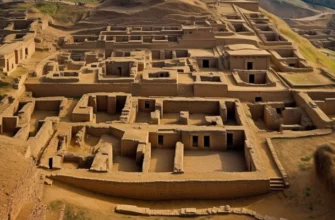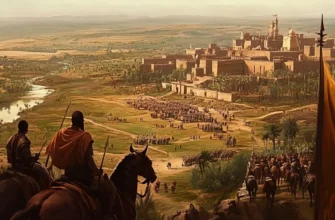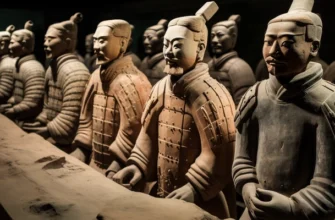The Kushite civilization developed in the Nile River valley from the 8th century BC to the 4th century AD. The Kushites were known for their culture, which included art, music, and religion. They also studied astronomy and mathematics. Politically, the Kushites were known for their military strength and governance. Compared to other African civilizations, the Kushite civilization was less developed than the Egyptian civilization, but more developed than most other civilizations of the same period.
Detailed description of the Kushite civilization
The Kushite civilization developed in the Nile River valley in what is now Sudan from the 8th century BC to the 4th century AD. The Kushites were known for their culture, which included art, music, and religion. They believed in many deities, such as Amun, Mut, and Khonsu. Many of these deities were shared with Egyptian mythology, as the Kushites were often under Egyptian influence.
The Kushites had a developed culture that included art, architecture, and music. Kushite temples were decorated with images of gods and paintings. The Kushites were also known for their music, which included vocal and instrumental compositions.
The Kushite civilization was also known for its achievements in science and technology. Kushite scientists studied astronomy and mathematics. They also developed new methods of agriculture and irrigation.
Politically, the Kushites were known for their military strength and governance. They were military allies of the Egyptians and later became an independent state. Kushite kings controlled the territory from the Nile River to the Red Sea, and they were known for their ability to govern large territories.
Compared to other African civilizations, the Kushite civilization was less developed than the Egyptian, but it was an important player in the history of the East and North Africa. The Kushite state was an ancient rival of Egypt, but it also had important trade and cultural ties with other African peoples, as well as with the Medes, Persians, and other peoples of the Near East.
The Kushite civilization was significantly influenced by the Egyptians and other Mediterranean peoples. In particular, the Kushites adopted the Egyptian written language, as well as hieroglyphics and Egyptian mythology. However, the Kushite civilization retained its unique features and traditions, making it an interesting subject for the study of African history and culture.
Today, the remains of the Kushite civilization can be seen in modern-day Sudan, where there are such monuments as the city of Meroe and the pyramids of the Kushite rulers. Researchers also continue to study the Kushite language and history to gain a more complete understanding of this important African civilization.
Culture
The culture of the Kushite civilization was quite developed and diverse. The Kushites had their own unique language and writing system, which was based on Egyptian writing. Kushite writing used glyphs that depicted animals, people, and other objects.
The Kushites were also known for their religion, which was syncretic, meaning it combined different beliefs and mythologies. The Kushites believed in the god Amun, but they also worshipped many other gods and goddesses. They believed that they had direct connections to the world of the dead, so the dead were often buried with objects that were intended for their use in the afterlife.
The Kushites were also masters of iron production and were known for their art. They created ceramics, made jewelry from gold and other metals, and embroidered fabrics.
In Kushite art, great attention was paid to symbolism and decorative design. For example, on the Kushite pyramids, you can see huge sculptures of lions, which symbolized the power and might of the rulers. The Kushites also made intricate engravings on their swords.
In general, Kushite culture was very diverse and has many interesting features that make it interesting to study and research.
Science
Kushite civilization was known for its science and technology. The Kushites were masters of iron production and made iron tools, weapons, and other items. They also possessed a high level of knowledge in the fields of architecture, engineering, and mathematics.
The Kushites used the stars to navigate and send their caravans on trading missions to various parts of Africa. They were also very skilled in the construction of water systems, which allowed them to thrive in the desert and supply their cities and settlements with water.
Kushite thinkers were interested in philosophy and religion. They developed their own belief system, which combined elements of other African and Middle Eastern religions. The Kushites are also known for their wisdom and ability to think abstractly.
Medicine was also well developed in the Kushite civilization. The Kushites used various plants and herbs to treat different diseases. They were also skilled surgeons and performed operations with anesthesia, which shows how advanced their medical knowledge was.
Overall, the Kushite civilization was pretty advanced in many areas of science and technology. Its contribution to world culture and science cannot be underestimated.
Politics
I cannot give a precise answer to the question about the politics of the Kushite civilization, since this civilization existed many thousands of years ago, and the information we have about it comes from various sources and is limited. However, based on some research and archaeological data, some assumptions can be made.
According to some sources, the Kushite civilization was monotheistic, meaning it believed in one God. This may indicate that the political system of the Kushite civilization was centralized, with strong leaders, possibly monarchs, who maintained their power through religious beliefs and ideology.
In addition, the Kushite civilization was quite developed, with a high level of culture and technology. They built complex infrastructure, such as dams and canals, to improve agriculture and irrigation, which may indicate a fairly effective management system.
Overall, it can be assumed that the politics of the Kushite civilization were based on centralized power, religious cultural heritage, and a high level of technological and cultural development. However, due to the limited amount of information available about this civilization, this is only a guess.
Comparison with other African civilizations
Africa has a rich history and cultural diversity, including many civilizations such as Egyptian, Congolese, Zimbabwean, Malian, and others. The Kushite civilization can be compared to other African civilizations based on several criteria:
Religion and cultural heritage: The Kushite civilization was monotheistic, which distinguishes it from most other African civilizations, which had polytheistic beliefs. This may indicate that the Kushite civilization had a more centralized and hierarchical system of power than some other African civilizations.
Level of technological development: The Kushite civilization was known for its understanding of hydraulics, large-scale construction, and other technologies. This distinguishes it from most other African civilizations, which had less developed technologies.
Geographical location: The Kushite civilization was located in the Nile River valley, in what is now Sudan and Ethiopia, which distinguishes it from other African civilizations located in different parts of the continent.
External influences: The Kushite civilization was influenced by other civilizations, particularly the Egyptian and Arab civilizations, which had a significant impact on its development. Other African civilizations were also influenced by external forces, depending on their geographical location and historical context.
Social organization: The Kushite civilization had a distinct class system, which distinguished it from some other African civilizations, where the social order was less hierarchical. At the same time, many African civilizations had complex systems of inheritance and power.
Thus, although each African civilization has its own unique characteristics, they can be compared according to certain common criteria. The Kushite civilization differs from most other African civilizations in its monotheistic religion, advanced technologies, and location in the northwest of the continent, as well as the influence of Egyptian and Arab cultures.
Conclusions
The Kushite civilization is of great importance to the history of Africa and the world as a whole. This ancient civilization, which existed in the region of modern Sudan and Ethiopia, was distinguished by its unique cultural, religious, and technological achievements.
The Kushite civilization was founded more than 4,000 years ago and developed over many centuries in connection with cultural and historical changes in the region. This civilization created its own writing system, developed architecture, art, science, and religion.
The most famous achievement of the Kushite civilization is the creation of the Kushite state. This state was the largest center of power in the region at the beginning of the first millennium BC. The Kushite state expanded its influence to neighboring regions and conquered some of them, such as the Nile Delta in Egypt.
The Kushite civilization also influenced the culture and history of other African peoples, particularly Ethiopian culture. Today, many artifacts and monuments of the Kushite civilization are preserved in museums around the world, and research into this civilization continues.








